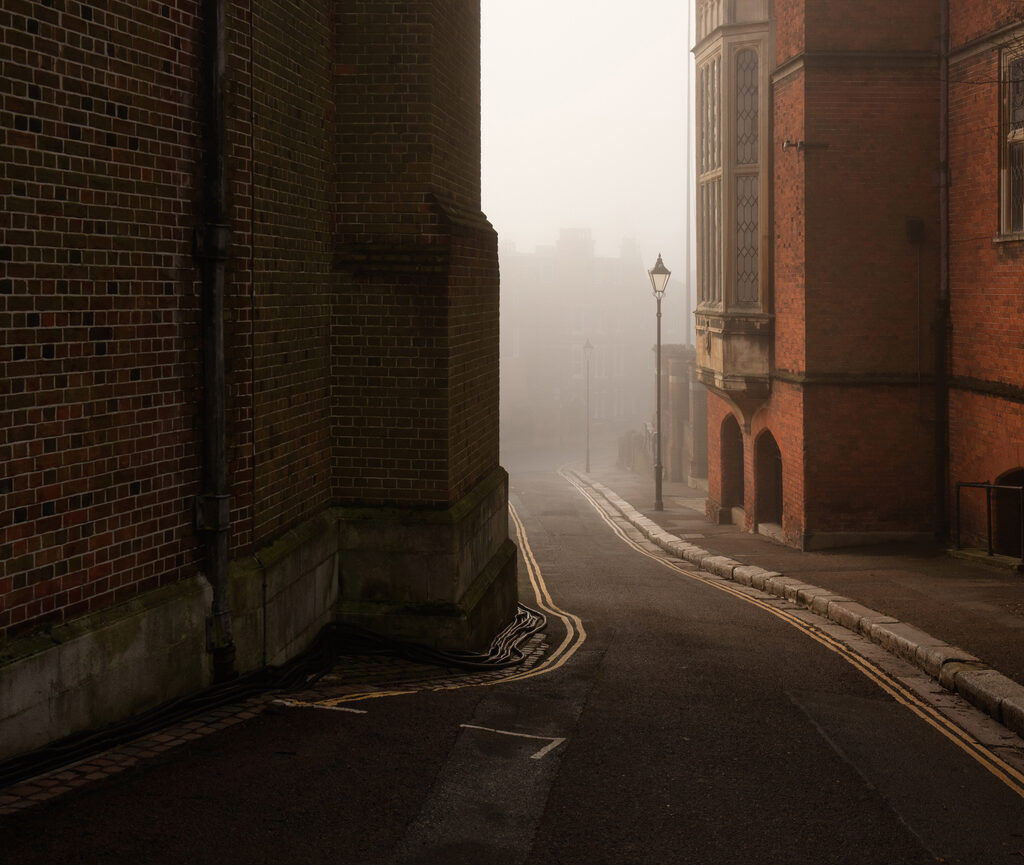The Walker: On Finding and Losing Yourself in the Modern City, Matthew Beaumont, Verso
The term ‘Dickensian London’ may conjure visions of a noir metropolis with chimneys belching smoke and narrow streets unsatisfactorily lit, peopled by shady characters melting into or looming out of the darkness. London in Dickens’ novels is not quite a character, but as a setting it has a life, steering the human characters. As in Stevenson’s Jekyll and Hyde, it is malevolent, full of unpleasant surprises, and at night reality and fantasy seem to blend. Matthew Beaumont says that for Dickens, walking the city at night was the same as dreaming.
G K Chesterton built on Dickens’ ‘understanding of the streets and their inhabitants’, but, typically, upturned things. Unlike other modernists who, says Beaumont, were disenchanted with the city, Chesterton made the city ‘miraculous’, and transferred the idea of the medieval quest to the city. This was in response to the pervasiveness of linear Enlightenment thinking. Chesterton preferred a more labyrinthian route to the truth and could see the way the city’s streets mirrored that. In this he agreed with the Surrealists that there is some wandering required before the truth appears with the force of revelation.
Chesterton’s The Man Who Was Thursday is the key example. Beaumont describes the plot as a nightwalk that becomes a nightmare. It is a confusion, a jumble of genres that reflects the dark night of the soul that Chesterton was going through at the time. But the dark turns into light. Paradoxically, meaning is found in the wasteland. Of course, there is a theology behind all this: the story reflects Chesterton’s Christian sense of truth – that it can be found in unlikely places, with the surprise of the rejected being divine turning the world upside down.
Our current experience of the city may be less Dickensian and Chestertonian, but in the modern city there remains a hidden city behind the facades. The city hums through unseen, often underpaid workers, often working at night. And walking the streets alerts us to the homeless, who are hidden in plain sight. Beaumont writes about H G Wells’ The Invisible Man, where the fantasy of being invisible is meant to be positive, but is undermined by the impracticalities. The invisibility of the homeless adds to their plight. Notice the efforts of office workers to ignore the homeless who try to position themselves so they are conspicuous but not disconcertingly intrusive.
Beaumont’s book centres on the way walking in the city is a political act. Walking is democratic. (The rich drive, and the super-rich fly.) It’s no surprise that ‘pedestrian’ is a synonym for ‘plebian’. Loitering, slow-walking, taking pictures, sightseeing – these can be misinterpreted as actions with criminal intent. In front of some London government buildings, pedestrians are hurried along. In the US, to be black and walking the streets makes one a target of surveillance, and in extreme cases, the victim of a ‘shoot first’ mentality amongst some police. Moral suspicion falls upon women alone in the city at night, as in the term ‘streetwalker’. In Mrs Dalloway Virginia Woolf tried to take back the city for women, arguing that it was their right, as much as men, to walk the streets.
In one of Ray Bradbury’s stories, he makes the suspicion of pedestrians more literal and consequential, in parallel with the way the book-reader is under suspicion in Fahrenheit 451. Police chase anyone walking the streets rather than being lulled at home by TV. A science fiction writer, Bradbury’s fiction is nevertheless based on reality. Many wealthier suburbs in the US have no footpaths, and a person on foot is immediately identifiable as an outsider. As with Stephen Graham’s excellent book Vertical, Beaumont alerts us to the way the city’s privileging of private cars demarcates the classes. This discouragement of walking also helps to prop up the fossil fuel industry. But the rise of inner city living in Australia, despite its drawbacks, reverses the trend, putting amenities within walking distance.
Walking in the city can be counter to the ‘time-is-money’ ethos. In the celebrated French figure of the flaneur, the city walker who leisurely enjoys whatever sights and sounds the city thrusts upon him, we see someone who is conspicuous in his lack of need for hurrying to make money. There is a certain pretentiousness in the flaneur, and yet there is a pleasure in walking without seeming purpose. Writers in the past understood the value of strolling for organising thoughts. One can imagine Chesterton ambling around Notting Hill, his imagination fired by the surroundings.
In contrast to the driver with places to be, the homeless are unhurried, like the flaneur, but through necessity or weariness. But one of the positives of city walking is that the walker will encounter the stranger, opening the possibility of exchange and generosity. One can’t conduct mission on the streets from the backseat of a car. When people can walk with each other, community is built. (Note also how to ‘walk with’ someone is a metaphor for sharing their pain.) Beaumont’s final chapter describes the surprising sense of reclaimed community he found in a group of marginalised people who meet at night on the streets of Paris.
The book recovers from literature and Beaumont’s own peripatetic mind the centrality of walking to human experience. It’s a patchwork of previously published articles, and the stitches sometimes show, but the overarching theme throws up many a pleasant surprise. Beaumont even includes a chapter on the big toe, noting that walking is a controlled form of falling, with the big toe leading the control. Unlike quadrupeds, standing upright and still is unnatural for humans. So, walking may be the default human position.
Nick Mattiske blogs on books at coburgreviewofbooks.wordpress.com and is the illustrator of Thoughts That Feel So Big.












